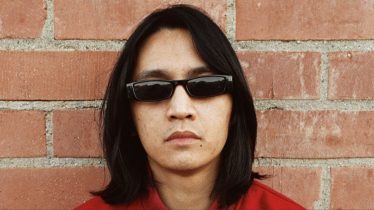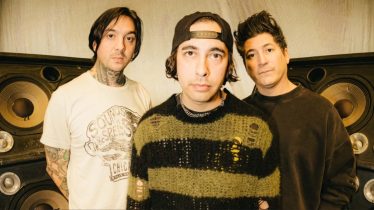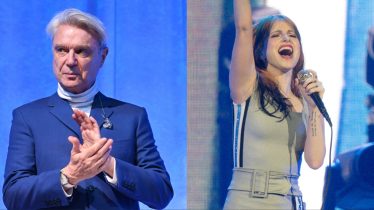The 5 great eras of pop-punk, from the ’70s to today
Like many musical genres AP covers with regularity, pop-punk has a major tendency to move in cycles: exploding, cooling off and then reviving. The cyclical nature of the genre has made it easy to divide its lifespan into eras, whether it be its initial explosion with Green Day, its mainstream peak in the late ’90s with Blink 182 or its fusion with emo in the early 2000s. The genre always seems to hit a linear focal point of creativity and buzz that sparks a subsequent musical era and a wave of bands that dive in, eager to take part. Chances are, most of you were introduced to pop-punk at the height of one of these five eras.
1. The Foundational Era
Before pop-punk’s mainstream acceptance via the likes of Green Day and Blink-182, the genre began its rise to prominence through much earlier advocates of the sound: Bands like the U.K.’s Buzzcocks would shape and pioneer the sound in the ’70s; American bands like Descendents would take the torch in the ’80s. By the early ’90s, pop-punk acts like Screeching Weasel and the Queers were beginning to have success under the banner of Lookout! Records, a label that would find itself at the center of the genre throughout the late ’80s and early ’90s. Some of this even predates AP’s founding in 1985.
2. West Coast Pop-Punk (1994-1997)
1994 was a big year for pop-punk: Green Day’s Dookie was released and would go on to become a genre staple and the band’s most wide-reaching release (later being certified Diamond for sales of more than 10 million copies). That same year, NOFX would release Punk In Drublic, their most commercially successful album, eventually going Gold. Offspring’s Smash was another massive breakthrough of this era, selling 6 million copies to date. Though Nirvana were far from pop-punk, the path they carved before Kurt Cobain’s death in ’94 helped fuel a mainstream embrace of all things punk, and such the pop-punk genre thrived.
3. The Mainstream Explosion (1998-2002)
This era was a pop-punk supernova. At any given time in the late ’90s/early 2000s, it was not uncommon to see Blink-182 and Sum 41 on MTV. You couldn’t escape it. Pop-punk was in, and it became the undisputed mainstream choice. Blink-182’s Enema Of The State would become the most commercially successful pop-punk release of this period, selling over five million copies and singlehandedly inspiring a new wave of pop-punk. Even as Blink and Sum cooled off, the fire of this era continued to burn strong: Good Charlotte were on what seemed like every top 40 radio station with “Lifestyles Of The Rich And Famous,” as were Simple Plan with “I’d Do Anything.” New Found Glory and MxPx both signed to major labels and began to cross over into the mainstream.
4. The Emo Invasion (2003-2007)
After the super-saturation of the last era, the genre seemed to take a brief rest until around 2004, when things began to take off again. Bands of the last era began to move in a more pop-driven, mainstream direction, which left the door open for a new wave of bands—with a new, more emotional attitude—to take up the mantle. A few years prior to this, Saves The Day released their hallmark album, Stay What You Are, which introduced a template fusion of pop-punk and emo for this new generation to take inspiration from. A small California indie label, run by two siblings out of their house, Drive-Thru Records, would rise to prominence and break such bands as the Starting Line, Something Corporate and Senses Fail. This was also the beginning of pop-punk’s relationship with social networking: Myspace would prove to be the genre’s greatest ally in this era. Bands like Fall Out Boy and Paramore would reach the stratosphere of success. Around 2007, this era would hit a second wave through poppier, younger acts like All Time Low, Mayday Parade and the Maine.
5. The Revival Era (2008-present)
Pop-punk’s emo era came to a swift end as bands like Fall Out Boy and Paramore moved on to more mainstream sounds and labels and Drive-Thru closed their doors. Pop-punk wasn’t universally celebrated the way it once was, as metalcore began to take center stage in the music scene. But around 2008, a resurgence of pop-punk would begin taking shape with bands like the Wonder Years, Man Overboard and the Story So Far, as the genre began drawing attention from iconic record labels like Hopeless, Fearless and even traditionally heavier labels like Rise. The massive eruption of A Day To Remember’s career that took place in this era undoubtedly helped fuel the resurgence. Though the band were a variant of pop-punk, metalcore and melodic hardcore, they showed that the genre could thrive again in some shape, and even reach rock radio. Now, much like in the late ’90s, pop-punk is in, and there’s a whole new wave of bands reviving the genre: Real Friends, State Champs, Modern Baseball, Neck Deep and Knuckle Puck to name a few. The question now is what will the next era look like? Will it explode into the mainstream once more? Will this new crop of bands be tomorrow’s legends? Or will it go back underground?







